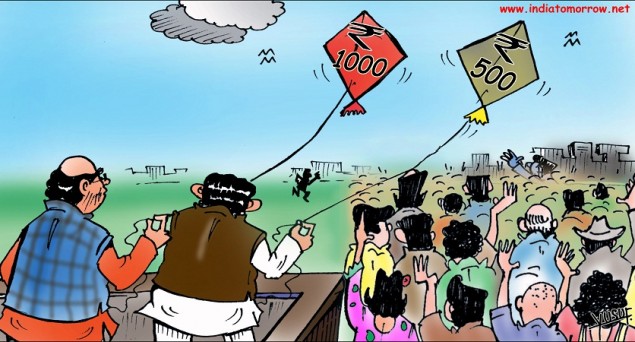New York, June 30: Demonetization failed to do what it was supposed to do and its impact is turning out to be more protracted than initially expected, a New York Times commentary has said.
And even from the point of view of promoting digital money, the government need not have put 86 per cent of all currency out of circulation, says Kaushik Basu, the C. Marks Professor of International Studies and professor of Economics at Cornell University.
“Demonetization was too coarse an approach, and it accomplished too little while causing too much collateral damage,” said Basu.
Nearly eight months after the government scrapped Rs 500 and Rs 1,000 notes, he said a lot of data was now available to help assess what demonetization had actually wrought.
“Here it is, in a word: Demonetization failed to do what it was supposed to do, and although the immediate disruption it caused was less severe than feared at first, the policy’s impact is turning out to be more protracted than initially expected.”
Basu, who was Chief Economic Adviser to the Indian government in 2009-12 and Chief Economist of the World Bank in 2012-16, pointed out that very little black money was caught — this was supposedly the prime reason why demonetization took place in November 2016.
Although there was visible chaos in the first weeks, even months, after the note ban, “the immediate damage caused, though large, was not as large as some of us had feared”, Basu said.
GDP growth in the last quarter of 2016 was 7 per cent and manufacturing activity continued to grow. But “there may be greater long-term side effects than expected”, he warned.
Already, India’s growth in the first quarter of 2017 was 6.1 per cent, down from 7.9 per cent in the fiscal year 2015-16.
“An economy is a complex machine, and there is no way to be absolutely certain that the cause of all this is demonetization,” Basu said.
“But there is a telltale sign: Much of the slowdown originated in the financial sector. Rural loans increased by only 2.5 per cent between October 2016 and April 2017, compared with 12.9 per cent a year before. The rate of growth in overall bank credit declined.
“The growth in industrial output in April was a paltry 3.1 per cent, down from 6.5 per cent the previous April. In the first quarter of 2017, the construction sector actually shrank, by 3.7 per cent, over the previous quarter.
“All this augurs poorly for the months to come: As the agriculture sector slows down in response to low crop prices and the credit shortage begins to bite, overall growth will likely fall further.
“The state-engineered shock of demonetization will continue to course through the economy.”
Basu added: “India’s economy has enormous strengths – such as high rates of savings and investment – and this crisis will pass.
“But just as sailors heading to sea disregard the winds and waves at their peril, economic policy makers cannot ignore the laws of economics, and intervene in the market with a blunt and heavy hand, without risking shipwreck.”
—
(IANS)





